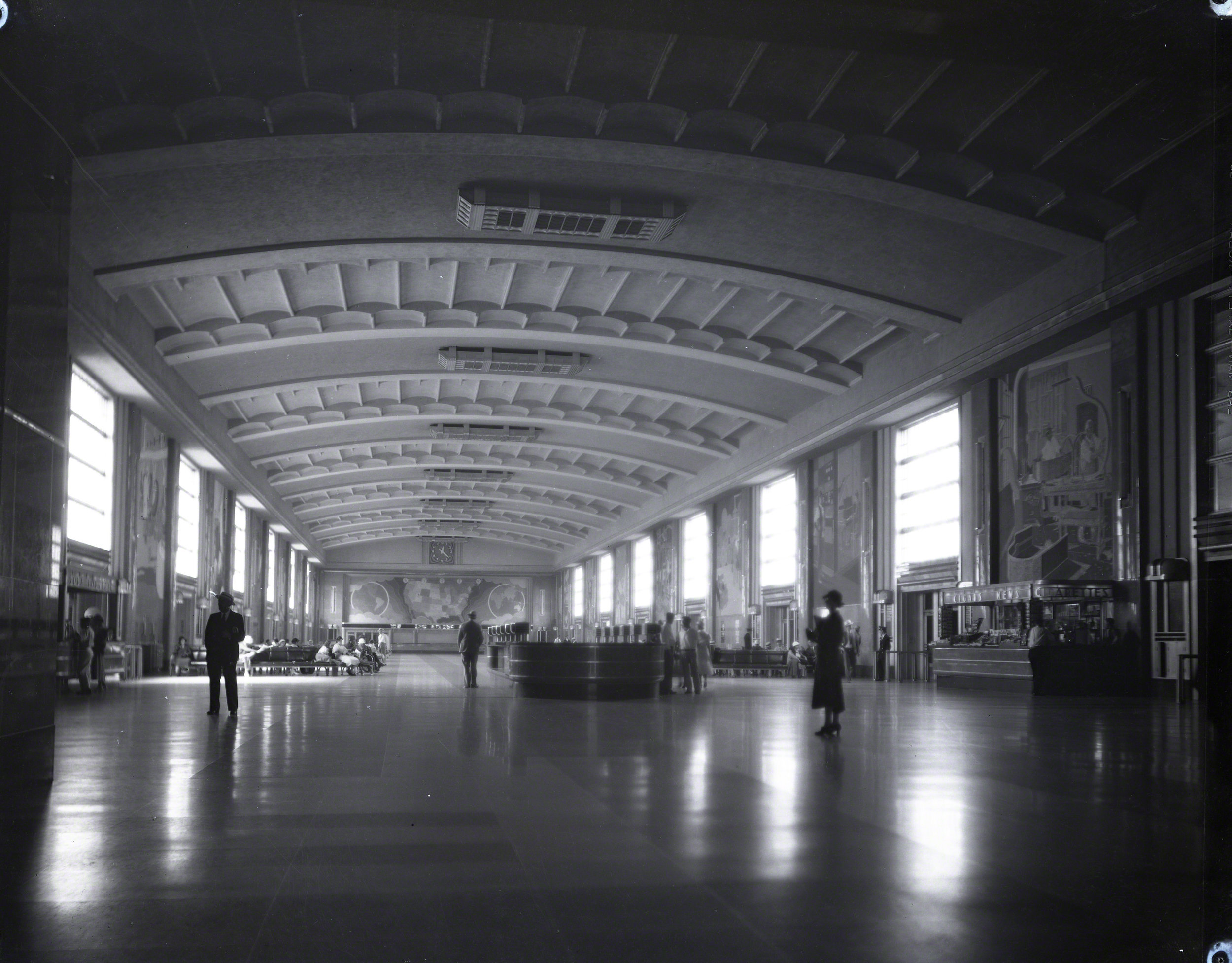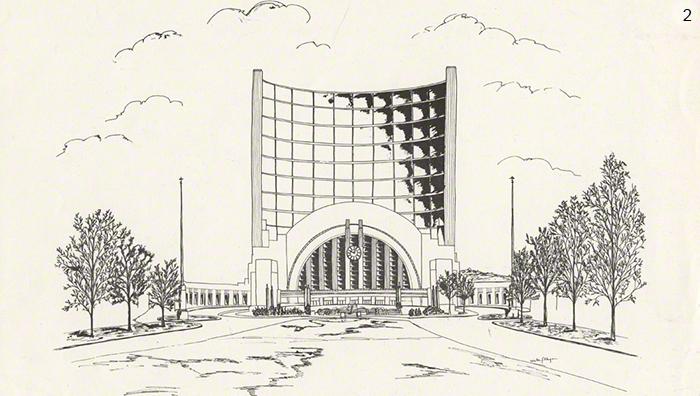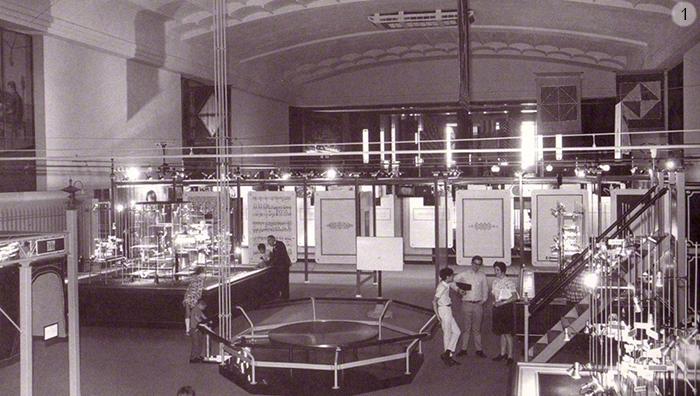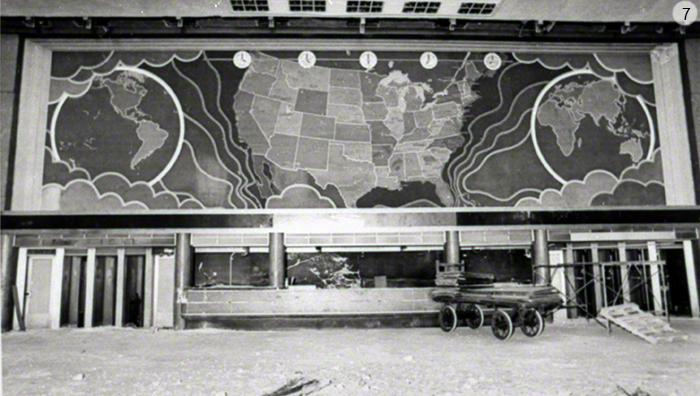
Reinvention
As passenger rail travel declined, the Union Terminal Company was faced with operating an aging facility that was increasingly underutilized.
As early as the late 1950s, the company board was exploring alternative uses for the building. Over the years, many different plans were considered, but it wouldn’t be until 1968 that any would be implemented.
The Cincinnati Science Center
Opening in summer 1968, the Cincinnati Science Center operated out of the large train concourse, installing their exhibits along the south side of the space, allowing the north side train gates to remain in use. Despite the enthusiasm many had for the Center, it was forced to close two years later due to financial difficulties. With the demise of the science center and with rail traffic slowing to a crawl, it began to look like there was no future for Union Terminal.
The Justice League
In the early 1970s, Union Terminal became the model for the home of the Justice League in the cartoon Super Friends. Artist Al Gmuer drew the Hall of Justice and based his creation off of the façade of Union Terminal, earning the building a permanent place in popular culture. Alas, even the Super Friends were unable to prevent the collapse of rail travel at Union Terminal.
The departure of passenger service and the arrival of freight
In 1971, Amtrak was created and assumed control over passenger rail operations throughout the country. Amtrak continued to use Union Terminal for that first year, until they built and moved to a much smaller and more practical station on River Road in Cincinnati. The last passenger train departed Union Terminal on October 28, 1972.
With the end of train service at Union Terminal, the Union Terminal Company was faced with a lot of debt and an empty building with no income to support it. When Southern Railroad offered to buy the yard and train concourse the following year, they had little choice but to accept. Southern was interested in turning the passenger yard into a freight yard and wanted to piggy back container cars through the area. However, the train concourse sat over the tracks and there wasn’t enough clearance to get them through. After some discussion, it was decided that the train concourse would have to be demolished.



Saving the concourse’s murals
Several groups rallied around the building and raised money to move 14 of the 16 mosaic panels from Union Terminal to the Cincinnati/Northern Kentucky International Airport. One group, Save the Terminal Inc., raised $400,000 to cover the cost of removing the murals, while the airport provided $136,000 to restore and install the murals. These murals were then transported by truck to the Delta terminal, where they were installed. The murals were immense, and weighed up to 11 tons a piece when fully crated for transport. The murals were separated from the walls, and lowered to the floor. There they were carefully packaged to protect them during transport. Once crated, they were lowered through a hole in the floor to a truck bed waiting below. The trucks then departed Union Terminal, following a course that took them across the Roebling Suspension Bridge, to their new home. Despite the successful efforts to save the 14 industrial mosaic panels, there was one mural that they were unable to save, the large panel at the rear of the train concourse. It was lost with the rest of the train concourse when it was demolished in late 1974.
The remaining two industrial murals and the two murals over the arrival and departure boards were moved in 1989 to make way for the OMNIMAX® Theater. Two of the murals can be seen next to the Cincinnati History Library & Archives entrance doors and the two industrial murals can be found in the Machine Tool Gallery in the Cincinnati History Museum.
Union Terminal mall
In 1975 the city of Cincinnati purchased Union Terminal from the Union Terminal Company in an effort to ensure the long term preservation of this historic icon. The city ran advertisements to rent the building for $1 a year but received no takers. It was not until 1979 that a developer from Columbus, Skilken & Co., submitted a proposal to turn the building into "Oz," an entertainment facility that would have featured an ice rink, theater and other amusements. In the end, the Skilken proposal became a mall, which opened in 1980. Despite some early success in attracting tenants in the various shopping areas, by 1984, most of the tenants had moved out. With Loehmann’s Department Store the lone holdout, the city began looking at other options.
